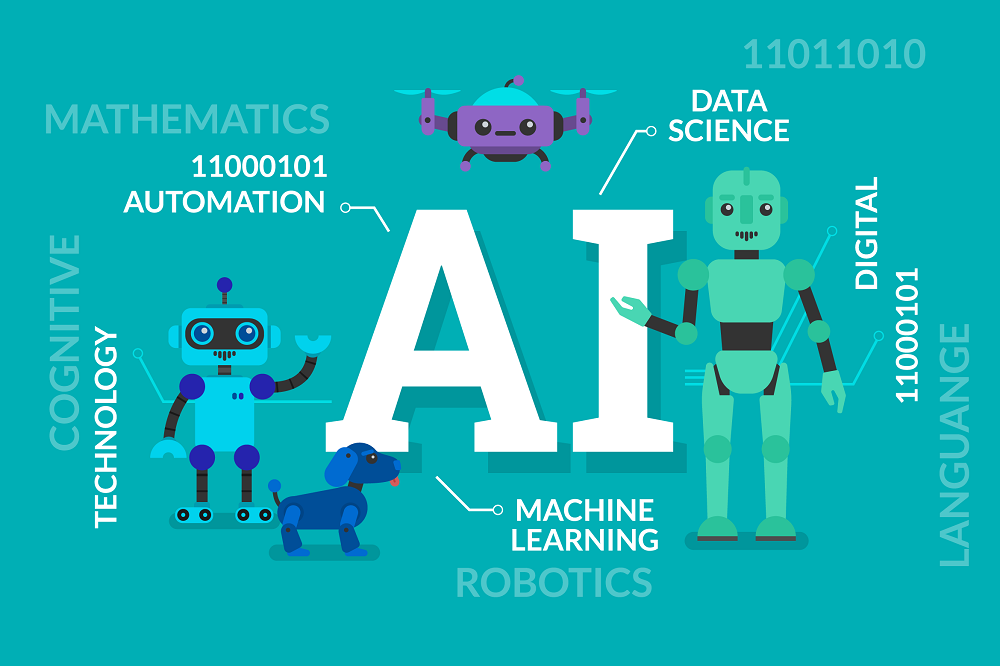1. Introduction
The article explores the importance of AI disclosure as a foundation for transparency, ethics, and regulatory compliance. Understanding AI disclosure becomes essential as artificial intelligence (AI) transforms industries. Transparency in AI applications is critical for building trust, ensuring ethical practices, and complying with evolving legal regulations.

This guide examines the significance of AI disclosure in various sectors, including content creation, workplace dynamics, social media, and customer service, while exploring strategies to mitigate misinformation risks and enhance credibility.
2. Key Definitions
Understand the core concepts of AI Disclosure, Transparency in AI, and AI Ethics. This section explains how openly sharing AI’s functioning, data use, and ethical considerations fosters accountability, builds trust, and promotes responsible AI practices across various applications
AI Disclosure: AI disclosure refers to openly communicating how AI systems function, the data they use, and the decision-making processes behind their outputs. This includes transparency around how AI models are trained, what data they process, and the ethical and legal implications of their use. For example, an AI-powered customer service chatbot should disclose how it uses data to respond to user queries.
Transparency in AI: Transparency in AI refers to the clarity with which organizations explain the inner workings of their AI systems. This involves revealing how AI algorithms make decisions and providing users with enough information to understand the reasoning behind those decisions. Transparency is essential for fostering trust, enabling accountability, and ensuring that AI is used responsibly. For instance, a social media platform might reveal how its algorithms prioritize certain content to users.
AI Ethics: AI ethics refers to the moral principles and guidelines that govern the design, development, and deployment of AI technologies. It encompasses issues like fairness, bias, accountability, privacy, and the broader social impact of AI. Ethical AI practices ensure that AI systems are developed and used to benefit society while minimizing harm. An AI-driven hiring platform should account for potential biases to ensure fair treatment of candidates.
These definitions will guide the exploration of AI disclosure and transparency throughout the document, helping readers navigate the complex AI landscape with a clearer understanding of these crucial concepts.

3. The Rise of AI Copilots and the Need for Transparency
Explore the rise of AI copilots and how transparency ensures ethical use and builds trust in these rapidly advancing tools.
As artificial intelligence (AI) advances, AI copilots—intelligent assistants designed to enhance human capabilities—are becoming increasingly prevalent across various industries. These tools transform professional interactions with technology, from content creation to customer support. However, their rapid integration underscores the need for transparency to ensure ethical usage.
AI copilots are now embedded in workflows, assisting with coding and content generation tasks. For example, GitHub Copilot provides developers with code suggestions, while ChatGPT supports writers in generating text. With nearly 70% of organizations adopting AI technologies, the significance of these tools cannot be overstated.
While AI copilots boost productivity and enhance creativity, reliance on these systems necessitates a clear understanding of their limitations and risks. Without transparency, users may inadvertently trust systems that operate as “black boxes,” obscuring their decision-making processes.

4: Enhancing Transparency and Trust in an AI-Driven World
Explore how transparency in AI systems builds trust and accountability, providing essential ethical safeguards for AI’s integration across industries.
As artificial intelligence (AI) becomes integral to various sectors, establishing and maintaining trust between organizations, users, and AI technologies is paramount. Transparency serves as a cornerstone for this trust, allowing users to understand how AI systems work, the data they rely on, and the decisions they make. By openly sharing information about how AI functions, organizations can reassure users that AI is applied responsibly, ethically, and with user welfare in mind.
Transparency in AI goes beyond simply disclosing the presence of AI; it involves a commitment to providing clear explanations of the data used, the algorithms at work, and the ways these systems impact users. For example, a social media platform that uses AI-driven algorithms to curate content could reveal how these algorithms prioritize certain types of information over others, allowing users to better understand their feed and make informed engagement choices. Such transparency fosters user confidence and mitigates concerns over potential biases or data misuse.
In addition to enhancing trust, transparency supports accountability, as it ensures that organizations are responsible for the behaviour and impact of their AI systems. Ethical AI practices, underpinned by open communication, help organizations avoid unintended harms, such as reinforcing stereotypes or infringing on user privacy. This transparency allows organizations to identify and correct mistakes swiftly, protecting users and maintaining their trust.
As we navigate an increasingly AI-driven world, transparency and trust become essential for AI’s successful integration. Organizations that prioritize openness can create meaningful and reliable connections with users, laying the groundwork for a responsible, trusted AI ecosystem that aligns with societal values.
5. Supporting Legal and Regulatory Compliance
Compliance with legal frameworks such as GDPR and CCPA becomes essential as AI technologies integrate into industries. This section outlines vital regulations and emphasizes the importance of proactive AI disclosure to ensure compliance and mitigate legal risks.
Alignment with Current Regulations: Laws like the General Data Protection Regulation (GDPR) set strict guidelines for data processing, requiring organizations to disclose when AI systems collect and analyse personal data. Transparent Disclosure ensures compliance with these regulations, protecting organizations from financial penalties and legal actions.
Anticipating Future Legislation: As the AI landscape evolves, new regulations are emerging. Proactive AI disclosure practices help organizations stay ahead of future legal requirements by aligning AI development with ethical standards and public expectations.
The AI Act proposed by the European Union further emphasizes the importance of transparency in high-risk AI systems, setting strict guidelines for ethical AI deployment.
Source for Reference: European Commission, AI Act Overview: https://digital-strategy.ec.europa.eu/en/policies/european-approach-artificial-intelligence.
Clear AI disclosure ensures legal compliance and positions organizations as forward-thinking and responsible in an increasingly regulated landscape.
Reference: For a deeper dive into legal aspects concerning AI-driven digital manipulation, explore related sections on privacy and intellectual property rights. Read more HERE.

6. Implementing Effective AI Disclosure
Implementing adequate AI disclosure requires clear communication and regular updates to ensure users and stakeholders understand AI systems. This section outlines best practices for organizations to foster transparency and accountability in their AI deployment.
To effectively implement AI disclosure, organizations and developers should consider the following practices:
Clear Communication: Explain how AI systems work using plain language, avoiding jargon that may confuse users. This ensures that all stakeholders can grasp the implications of AI use.
Regular Updates: The information provided should be updated regularly as AI technologies evolve. Users should have access to the latest information on capabilities, limitations, and ethical considerations. For practical strategies to secure content against unauthorized AI-driven manipulation, see additional tools and methods for digital protection Read more HERE.
AI disclosure is not just about transparency but about empowering users with the knowledge they need. Training and resources, such as workshops, guides, and FAQs, can enhance understanding of AI disclosure. This allows users to engage with AI systems more critically and responsibly, ensuring they know what is necessary to navigate the AI landscape.
7. Conclusion of the Section
Understanding AI disclosure is not just about navigating the complexities of AI technologies in today’s digital landscape. It is about promoting ethical AI practices, building trust, and empowering users to make informed decisions. By fostering transparency and awareness, organizations can ensure that AI is used responsibly and ethically.
Reference: For practical strategies to secure content against unauthorized AI-driven manipulation, see additional tools and methods for digital protection. Read more HERE.

8. The Importance of AI Disclosure
This section explains the importance of AI disclosure in fostering trust, ensuring ethical practices, and complying with legal regulations. Transparency is critical for organizations to maintain credibility and mitigate potential risks associated with AI technologies.
AI disclosure is critical in promoting ethical standards, building trust, and ensuring industry legal compliance. As AI systems become more embedded in various sectors, transparency regarding their use is essential for establishing user confidence and fostering accountability.
Fostering Trust and Credibility: Users who understand how AI systems work are more likely to trust them, especially in fields like healthcare, where AI decisions can significantly impact lives. Trust is further enhanced when organizations demonstrate openness about how AI tools process and utilize data.
Encouraging Ethical Use: Transparency enables organizations to address ethical concerns such as bias, privacy violations, and accountability. Ethical AI practices depend on disclosing how AI systems are designed, trained, and implemented, ensuring that users and developers can identify and mitigate potential risks.
Supporting Legal Compliance: Laws like the General Data Protection Regulation (GDPR) require organizations to disclose how AI processes user data. Transparent AI systems ensure that companies meet legal requirements and stay ahead of future regulations, reducing the risk of financial penalties and reputational harm.
For example, organizations can review the European Union’s guidelines on AI ethics and GDPR to ensure their AI systems manage data transparently and comply with the latest legal requirements (European Commission, 2020).
Source: European Commission AI Ethics Guidelines – URL: https://digital-strategy.ec.europa.eu/en/policies/ethics-guidelines-trustworthy-ai
By prioritizing AI disclosure, organizations foster user confidence, ensure ethical innovation, and build a strong foundation of trust that supports their long-term credibility.
9. Building and Maintaining Trust
Discover strategies for fostering user confidence in AI systems, focusing on transparency, consistent messaging, and stakeholder engagement. Building and maintaining trust is essential for the adoption of AI technologies. This section explores the role of transparency, consistent messaging, and stakeholder engagement in fostering user confidence in AI systems.
In the rapidly evolving AI landscape, establishing and maintaining trust is essential. Transparent AI disclosure practices are crucial to fostering user confidence. Practical strategies to build trust include:
Transparency in AI Processes: Communicating how AI systems operate and the data they utilize fosters trust. Users are more likely to engage with AI tools when they understand how they work.
Consistent Messaging: Consistency across communications reinforces trust. Organizations must ensure their claims about AI align with actual practices to avoid scepticism. For instance, Google’s AI transparency efforts include tools that help users understand how their data informs recommendation algorithms.
Reference: Gain insights on AI’s impact on authenticity in digital media, including techniques for securing credibility. Read more HERE.
10. Engaging with Stakeholders
Explore best practices for involving stakeholders in AI discussions, from education to feedback, to ensure AI is responsibly implemented and trusted.
Active engagement with stakeholders is crucial for building trust:
User Education and Training: Providing resources on AI technologies enhances understanding and promotes responsible engagement. Workshops and webinars empower users to navigate AI systems effectively.
Encouraging Feedback and Participation: Establishing channels for user feedback fosters a sense of ownership, and when users feel heard, their confidence in AI increases.
Collaborating with Experts and Regulators: Partnering with industry experts to establish best practices enhances credibility and demonstrates a commitment to ethical AI practices.
11. Demonstrating Accountability
Establishing trust in AI systems requires accountability. Users need to feel confident that organizations will take responsibility for AI-generated outcomes:
Clear Accountability Structures: Organizations should clearly define who is responsible for AI decision-making and how accountability is enforced. This clarity helps users understand their options for recourse in case of errors. For instance, if an AI tool provides inaccurate information, users should know whom to contact.
Transparent Reporting of AI Performance: Regularly sharing information about AI performance and limitations fosters trust. Organizations should disclose details about accuracy, reliability, and ethical considerations, encouraging a culture of transparency and continuous improvement.
Conclusion of the Section
Building trust in AI technologies is crucial for successful adoption. Organizations can create an environment where users feel confident in their interactions with AI systems by prioritizing transparency and demonstrating accountability.
12. Legal and Regulatory Compliance
Explore the importance of legal and regulatory compliance in AI implementation. Highlight key frameworks like GDPR and CCPA and provide insights into how organizations can align their AI practices with evolving legal requirements.
As artificial intelligence (AI) continues to advance and integrate into various sectors, the necessity for legal and regulatory compliance becomes increasingly critical. Organizations must navigate a complex landscape of laws and guidelines governing AI technologies. This section outlines current legal frameworks surrounding AI, their implications for organizations and individuals, and the importance of AI disclosure for ensuring compliance.

13. Overview of Current Legal Frameworks
Discover the main legal frameworks governing AI technologies, including GDPR, CCPA, and AI Ethics Guidelines, emphasizing the need for transparency in AI data usage and decision-making to ensure compliance.
Several legal frameworks address AI technologies, focusing on privacy, data protection, and ethical considerations. Key regulations include:
General Data Protection Regulation (GDPR): Implemented in 2018, GDPR sets strict guidelines for data processing and privacy within the European Union. It emphasizes transparency in data collection, requiring organizations to inform users when AI systems process their data and clarify the purposes of data usage. Compliance necessitates robust AI disclosure practices to avoid penalties.
California Consumer Privacy Act (CCPA): Like GDPR, the CCPA enhances privacy rights for California residents, granting them greater control over their data. Organizations using AI to process consumer data must ensure transparency to comply with CCPA regulations.
AI Ethics Guidelines: Organizations like IEEE and the European Commission have published ethical guidelines for AI development, emphasizing transparency, accountability, and fairness. While not legally binding, adherence to these guidelines helps organizations establish best practices and demonstrate a commitment to ethical AI usage.
14. Implications for Organizations
This section outlines the challenges and opportunities AI regulations present for organizations, focusing on risk management, informed decision-making, and how transparency can enhance credibility and market reputation.
The legal and regulatory landscape for AI presents both challenges and opportunities:
Risk Management: Non-compliance can result in substantial financial penalties and reputational harm. Organizations must prioritize compliance and implement transparent AI disclosure practices to enhance their integrity.
Informed Decision-Making: Understanding legal requirements enables organizations to make informed decisions about AI deployment, align strategies with regulatory standards, and foster user trust.
Enhancing Credibility: Organizations emphasizing legal compliance and ethical AI practices can strengthen their market reputation. Transparency in AI disclosure reflects a commitment to responsible practices, attracting ethically conscious customers.
15. Top AI Selling Amazon Books:
Here is a list of the current top-selling AI books on Amazon. These titles cover various aspects of artificial intelligence, from ethical implications to practical applications and theoretical insights:
“The Coming Wave: Technology, Power, and the 21st Century’s Greatest Dilemma” by Mustafa Suleyman
Suleyman delves into AI and biotech’s ethical challenges and power dynamics, addressing the impact on society. Read more HERE“Life 3.0: Being Human in the Age of Artificial Intelligence” by Max Tegmark
This book explores AI’s potential to shape human existence, raising questions about ethics and future societal impacts. Read more HERE“Superintelligence: Paths, Dangers, Strategies” by Nick Bostrom
Bostrom examines the strategic and existential risks of developing superintelligent AI, discussing implications for humanity. Read more HERE“AI 2041: Ten Visions for Our Future” by Kai-Fu Lee and Chen Qiufan
This book combines fictional scenarios with real-world insights, envisioning the world AI could shape by 2041. Read more HERE“The Singularity Is Nearer” by Ray Kurzweil
Kurzweil explores advancements that bring us closer to a future where AI intelligence may surpass human capacity. Read more HERE“The Alignment Problem: Machine Learning and Human Values” by Brian Christian
Christian delves into aligning AI with human ethics and values, addressing failures and solutions in machine learning. Read more HERE.“AI Snake Oil: What Artificial Intelligence Can Do, What It Can’t, and How to Tell the Difference” by Arvind Narayanan
This book helps demystify AI capabilities, assisting readers in distinguishing realistic AI potential from exaggerated promises. Read more HERE“Hands-On Machine Learning with Scikit-Learn, Keras, and TensorFlow” by Aurélien Géron
Géron offers practical guidance on building machine learning models, with hands-on techniques for effective implementation. Read more HERE“Nexus: A Brief History of Information Networks from the Stone Age to AI” by Yuval Noah Harari
Harari examines the evolution of information networks leading up to AI, providing historical context for modern technology. Read more HERE.“The AI-Driven Leader: Harnessing AI to Make Faster, Smarter Decisions” by Geoff Woods
Woods offers insights for leaders looking to integrate AI in decision-making, presenting actionable strategies for AI implementation. Read more HERE
Protecting Online Workers in the Age of AI: A Comprehensive Guide to Detecting Deep Fakes and Fact-Checking
In today’s fast-paced digital world, artificial intelligence (AI) has revolutionized the way we work online. But with this innovation comes new risks, including the rise of deep fakes and AI-generated content. How can freelancers and online professionals protect their integrity and work in an era where truth is often blurred? Read more here.
16. Implications for Individuals
This section details the legal rights and protections available to individuals under AI regulations like GDPR and CCPA, explaining how transparency in AI systems empowers users through informed consent and ethical AI practices.
Legal compliance also has significant implications for individuals using AI technologies:
Consumer Rights: Regulations like GDPR and CCPA empower users with rights over their data, allowing them to request information and control data collection. For example, under GDPR, individuals can request that a social media company disclose how their data is used for AI-driven recommendations, giving them control over their data.
Informed Consent: A solid understanding of the legal context enables individuals to give informed consent regarding their data. Clear AI disclosures assist users in making better choices about their interactions with AI.
Advocacy for Ethical AI Practices: As consumers become aware of their legal rights and the ethical implications of AI, they can advocate for responsible practices, prompting organizations to prioritize transparency.
Conclusion
Navigating the legal landscape of AI is crucial for both organizations and individuals. By emphasizing compliance and AI disclosure practices, organizations can mitigate risks and enhance credibility while individuals gain the knowledge to make informed decisions about their interactions with AI technologies.
17. AI Disclosure in Content Creation
Explore the importance of AI disclosure, trust, and ethical considerations as AI technologies evolve, urging organizations to prioritize AI disclosure across all sectors.
As AI technologies become more embedded in content creation, transparency about AI’s role in generating or assisting content is essential for maintaining credibility and trust with audiences. Users increasingly expect to know when AI is involved in producing articles, images, and videos, as this knowledge enables them to critically assess the content’s origin and authenticity. Clear AI disclosure allows users to distinguish between purely human-generated and AI-assisted content, which is especially valuable in fields such as journalism, creative media, and educational resources where credibility is paramount.
In addition to transparency, ethical considerations in AI-assisted content creation focus on ensuring that AI does not perpetuate bias or reduce creative originality. By openly disclosing AI’s involvement and clearly defining its role in content production, organizations can safeguard against unintentional bias that may arise from data-driven AI models. Such proactive disclosure practices not only support ethical standards but also empower users to engage with content confidently, fostering a stronger, more responsible digital ecosystem.
18.The Role of AI Tools in Content Creation
Platforms like Grammarly and Canva integrate AI to enhance content creation by providing suggestions and design elements, helping users create content more effectively while maintaining transparency around AI’s role. AI tools have become invaluable for content creators and marketers, offering several key benefits:
Automated Content Generation: Tools like OpenAI’s ChatGPT and Jasper can quickly produce a wide range of written content, allowing creators to focus on strategic tasks and boost productivity.
Enhanced Creativity: AI design tools like Canva and Adobe Sensei enable users to effortlessly create visually appealing graphics. These platforms utilize machine learning to suggest design elements, making professional-quality visuals accessible to all skill levels.
Data-Driven Insights: AI analyses user behaviour and preferences, providing valuable insights for content strategy. For instance, HubSpot uses AI to recommend trending topics, helping marketers create relevant content.
For insights on maintaining authenticity with AI in content creation, Read more HERE.
While these advantages are significant, Disclosure of AI use is crucial.
19. The Necessity of Transparency in AI-Generated Content
AI disclosure is vital for several reasons:
Maintaining Authenticity: Users should know when content is AI-generated to evaluate its credibility. Clear Disclosure allows readers to contextualize the information and reinforces trust.
Intellectual Property Concerns: The use of AI raises questions about content ownership. Disclosing AI’s role in the creative process clarifies rights issues and helps organizations navigate intellectual property laws.
Consumer Expectations: As audiences become more aware of AI, their expectations for transparency increase. Clearly labelled AI-generated content fosters trust and engagement.
Ethical Considerations: Transparency promotes ethical practices by informing users how AI influences outputs, particularly concerning potential biases and misleading narratives.
20. Best Practices for AI Disclosure in Content Creation
To ensure transparency, organizations can implement the following best practices:
Clear Labelling: Indicate when content has been generated or assisted by AI. A simple note, such as “This article was generated with AI assistance,” informs readers of the content’s origin.
Provide Context: Explain the AI tool’s capabilities and limitations. This enhances users’ understanding of the content creation process.
Regular Reviews: Establish a process for reviewing AI-generated content to ensure accuracy and quality. Transparency in this review process reassures audiences regarding the content’s reliability.
Educate Audiences: Provide resources that explain AI’s role in content creation, such as articles or guides outlining how AI tools work and their implications for quality and authenticity.
Conclusion
AI disclosure in content creation is essential for maintaining authenticity, addressing ownership concerns, and meeting consumer expectations. By prioritizing transparency, organizations can promote ethical practices, enhance credibility, and foster audience trust.
Reference: Learn about ethical transparency practices for AI applications in digital content creation. Read more HERE.
Reference: Explore advanced content tools and strategies for practical insights on leveraging AI in content generation, balancing efficiency with originality. Read more HERE.
21. AI Disclosure in the Workplace
Discover how AI transforms the workplace, including its benefits for efficiency and decision-making. It emphasizes the need for transparency in AI usage to address employee concerns and promote ethical AI practices. Integrating artificial intelligence (AI) into the workplace is increasingly significant, as AI technologies automate tasks and enhance decision-making. However, transparency regarding AI’s role and implications is essential for employees and organizations.
22. The Role of AI in the Workplace
AI technologies are being adopted across various industries, providing several key benefits:
Increased Efficiency: AI automates repetitive tasks, such as data entry and customer inquiries, allowing employees to focus on strategic responsibilities. For example, AI chatbots streamline customer service by managing routine questions and freeing human agents for more complex issues.
Enhanced Decision-Making: AI systems analyse large datasets to deliver insights that support informed decisions. Predictive analytics tools help organizations forecast trends and assess risks effectively.
Personalized Employee Experiences: AI customizes training and development programs based on individual needs, enhancing job satisfaction and professional growth. AI-driven platforms analyse performance data to recommend relevant learning resources.
Despite these advantages, clear communication about AI’s role is necessary.
Reference: Learn about AI-driven automation’s role in enhancing workplace efficiency and potential challenges in AI-human collaborations. Read more HERE.
23. The Importance of Transparency in AI Implementation
Discover why transparency in AI implementation is essential, focusing on trust-building, managing employee concerns, promoting ethical AI use, and ensuring accountability in AI-powered workplaces.
Transparency in AI implementation is crucial for several reasons:
Building Trust Among Employees: Employees need to understand how AI systems function and how their data is used. Transparent communication fosters trust, as informed employees are more likely to embrace these technologies. Research indicates that organizations prioritizing transparency experience higher engagement and satisfaction.
Managing Employee Concerns: The introduction of AI can raise concerns about job security and potential biases. By openly discussing AI’s implications, organizations can proactively address these issues, ensuring employees feel valued and supported.
Promoting Ethical Use: Transparency in AI decision-making prioritizes ethical considerations. For instance, when AI is used for hiring, disclosing how algorithms operate can mitigate biases and promote fairness.
Ensuring Accountability: Clear AI disclosure establishes responsibility for AI-generated outcomes. Organizations should clarify recourse options for employees in case of issues, fostering a culture of accountability.
24. Best Practices for AI Disclosure in the Workplace
To enhance transparency, organizations can adopt the following best practices:
Communicate Clearly and Frequently: Regular updates about AI’s role in the workplace, including integration plans and potential concerns, are essential.
Involve Employees in AI Integration: Engaging employees in discussions about AI usage and providing training can enhance acceptance and trust.
Establish Guidelines for AI Use: Clear guidelines should outline how AI tools are utilized, addressing ethical considerations and employee rights.
Offer Training and Support:Workshops, webinars, and tutorials can empower employees to use AI technologies in their roles effectively.
Conclusion
AI disclosure in the workplace is vital for building trust, managing employee concerns, and promoting ethical practices. By prioritizing transparency, organizations can create a supportive environment where employees feel confident in their interactions with AI technologies.
25. AI Disclosure in Social Media
They reveal how AI is used in social media for content personalization, customer service, and targeted advertising, stressing the importance of transparency to maintain authenticity and trust with users. As social media platforms increasingly leverage artificial intelligence (AI) to enhance user experiences, automate content curation, and optimize advertising strategies, the need for transparency surrounding AI usage has become paramount.
Social media serves not only as a tool for communication and engagement but also as a powerful marketing platform where the implications of AI technologies can significantly impact brand reputation and user trust. This section explores the role of AI in social media and the necessity of Disclosure to ensure authenticity and accountability.

26. The Role of AI in Social Media
AI technologies play a crucial role in shaping the dynamics of social media, offering numerous benefits to businesses and users alike:
Content Personalization: AI algorithms analyse user behaviour and preferences to deliver tailored content. For instance, platforms like Facebook and Instagram utilize AI to curate users’ feeds, ensuring displayed content aligns with their interests. While this personalization can enhance engagement, it also raises concerns about echo chambers and the diversity of information.
Automated Customer Service: AI chatbots are increasingly employed in social media to provide instant support. These chatbots manage inquiries, provide recommendations, and address complaints, enhancing the customer experience while reducing response times.
Targeted Advertising: AI-driven analytics enable marketers to segment audiences and create targeted ad campaigns. By analysing vast datasets, AI can identify specific demographics and tailor messaging, improving the effectiveness of marketing strategies.
While AI’s advantages in social media are evident, the importance of transparency in its implementation cannot be overlooked.
27. The Importance of Transparency in AI Use
Transparency in AI use within social media is vital for several reasons:
Maintaining Authenticity: Users must know when they interact with AI-generated content, such as advertisements or automated responses. Clear Disclosure about AI involvement helps maintain authenticity and prevents misinformation. Transparency is essential for building trust between brands and consumers.
Addressing Misinformation: The potential for AI-generated misinformation is a significant concern in the social media landscape. Disclosing AI’s role in content curation and advertising can help users critically evaluate the information they encounter. Platforms that are transparent about their AI processes can mitigate misinformation risks and promote a more informed user base.
User Empowerment: When users are informed about how AI shapes their social media experiences, they are better equipped to navigate these platforms critically. This awareness enables users to make informed decisions about the content they consume and engage with, fostering a more active and discerning online community.
Compliance with Regulations: As social media platforms face increasing scrutiny regarding data privacy and ethical practices, compliance with regulations like the General Data Protection Regulation (GDPR) becomes essential. Transparent AI disclosure practices can help organizations meet legal requirements and demonstrate their commitment to ethical standards.

28. Best Practices for AI Disclosure in Social Media
To promote transparency in AI use on social media, organizations can adopt the following best practices:
Clearly Label AI-Generated Content: Organizations should label content generated or significantly influenced by AI. For example, a social media post created using an AI tool should include a disclaimer, such as “This post was generated with the assistance of AI,” to inform users.
Provide Insight into AI Algorithms: Transparency in AI can enhance user understanding and trust by offering insights into how AI algorithms function. Organizations can share information about the data used for training AI systems and the criteria for content personalization, allowing users to assess the credibility of the content presented.
Engage Users in Conversations about AI: Organizations should actively engage users in discussions about using AI in their social media strategies. This could involve hosting Q&A sessions or publishing articles that explain the benefits and challenges of AI technologies in social media.
Establish Ethical Guidelines: Developing and adhering to ethical guidelines regarding AI use in social media can enhance transparency. Organizations should outline their commitment to responsible AI practices, ensuring that content generation and curation processes align with ethical standards.
Conclusion
AI disclosure in social media is essential for maintaining authenticity, addressing misinformation, and promoting user empowerment. By prioritizing transparency in AI usage, organizations can foster trust and credibility in their social media interactions, ultimately enhancing the overall user experience.
29. Conclusion
This concluding section emphasizes the commitment to transparency, trust, and ethical considerations as artificial intelligence (AI) becomes integral to our future. It calls for stakeholders to prioritize these values in all AI interactions.
As we move into a future where AI plays an integral role, let us commit to ongoing learning and adaptation to maintain transparency, ethical standards, and legal compliance. Organizations and individuals must stay informed and update their AI practices regularly, ensuring they align with evolving legal frameworks and ethical standards. Stakeholders are encouraged to stay informed about new developments in AI ethics and regulatory updates to maintain responsible and transparent AI practices.
30. References
This final section lists relevant references, including eBooks, quoted sources, and videos used in the article, to provide readers with resources to explore AI transparency, ethics, and practices further.
Sources Quoted in the Article (H3)
- Deloitte. (n.d.). The Value of Transparency in the Age of AI. Retrieved from [Deloitte Insights]
- Pew Research Center. (2020). The Future of Truth and Misinformation Online. Retrieved from [Pew Research]
- Stanford University. (2019). AI Index 2019 Annual Report. Retrieved from [Stanford AI Index]
- AI Ethics Lab. (n.d.). Ethical Considerations for AI in the Workplace. Retrieved from [AI Ethics Lab]
- General Data Protection Regulation (GDPR)
The GDPR is a comprehensive data protection law in the European Union that sets strict guidelines on data privacy and security, requiring transparency in data collection and processing. It applies to any organization that handles EU citizens’ data, regardless of the organization’s location.
Reference Link: General Data Protection Regulation (GDPR) – EU
Additional Source: European Commission – Data Protection in the EU
- California Consumer Privacy Act (CCPA)
The CCPA is California’s data privacy law designed to protect residents’ personal data, providing rights such as data access, deletion, and opt-out of data sales. It primarily affects companies that collect, process, or sell data of California residents.
Reference Link: California Consumer Privacy Act (CCPA) – State of California Department of Justice
Additional Source: CCPA Full Text – California Legislative Information
- John Cosstick. (2024). Protecting Online Workers.
- Ethical and Practical Challenges of AI
Reference: Understand the ethical dilemmas AI poses, from privacy risks to biased data, and how to mitigate these challenges in your work. Read more HERE
Disclaimer: The information in this article is intended for general informational and educational purposes only and is not intended as legal, financial, or professional advice. While every effort has been made to ensure accuracy, the AI landscape and its associated legal and ethical frameworks are rapidly evolving. As such, some content may become outdated over time. We strongly recommend that readers seek personalized legal or professional advice relevant to their specific situations before making decisions related to AI disclosure, transparency, or ethical practices.
A.I. Disclosure: The writer of this article used Artificial Intelligence for Research and Writing Assistance.














